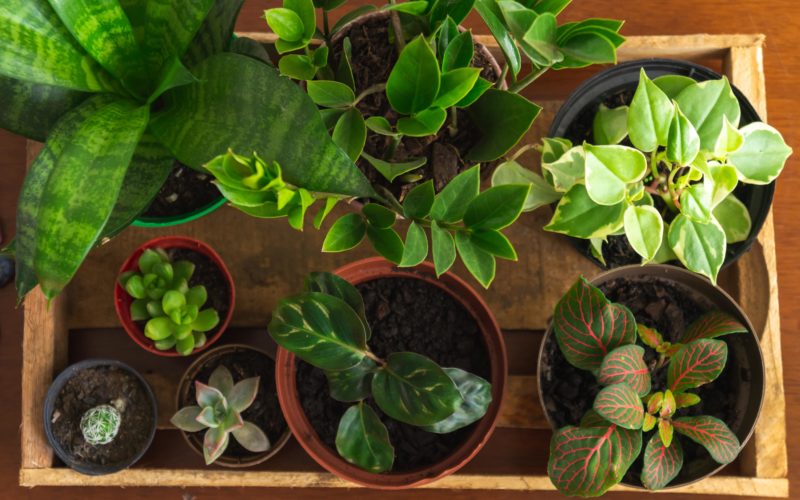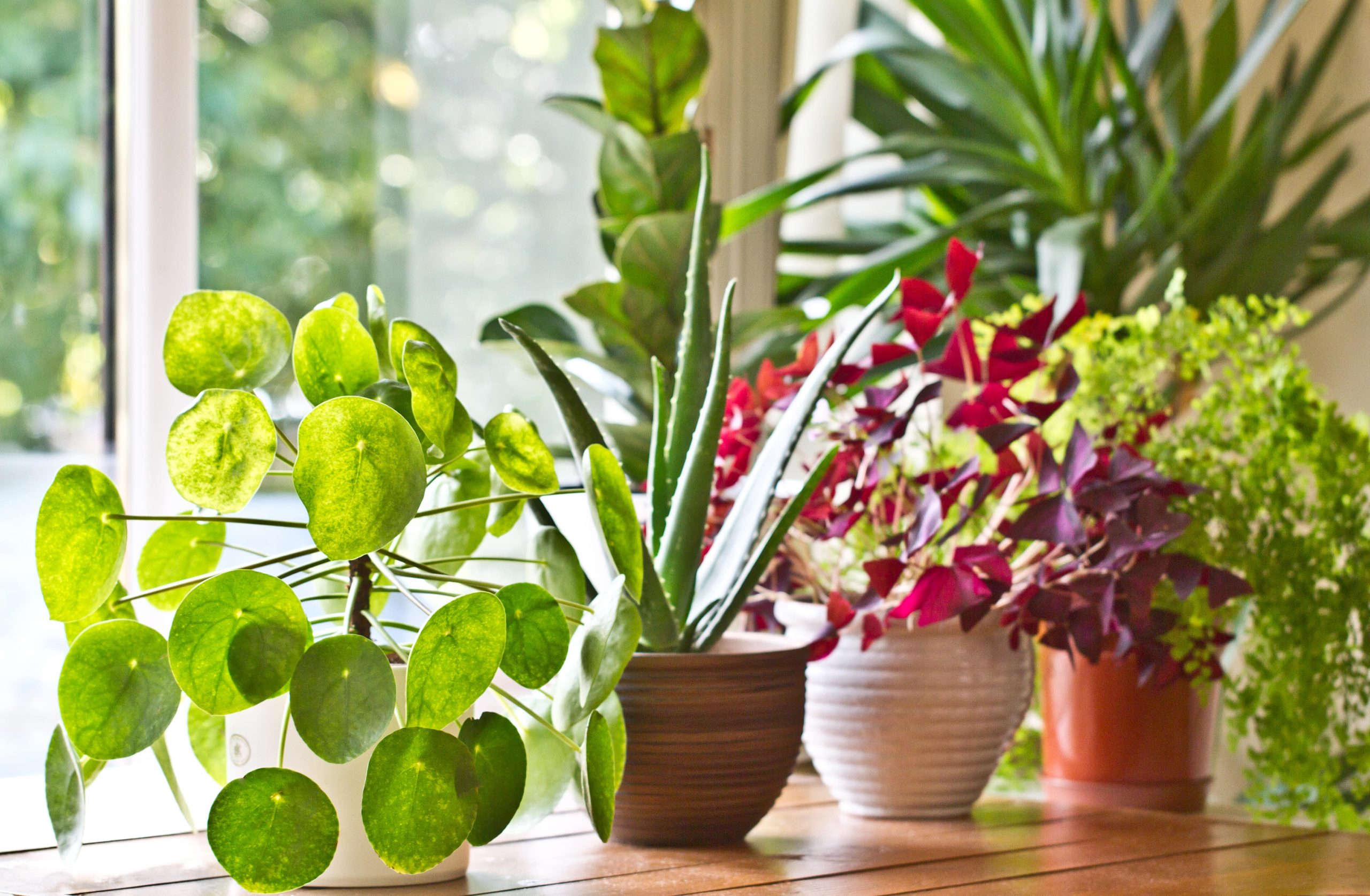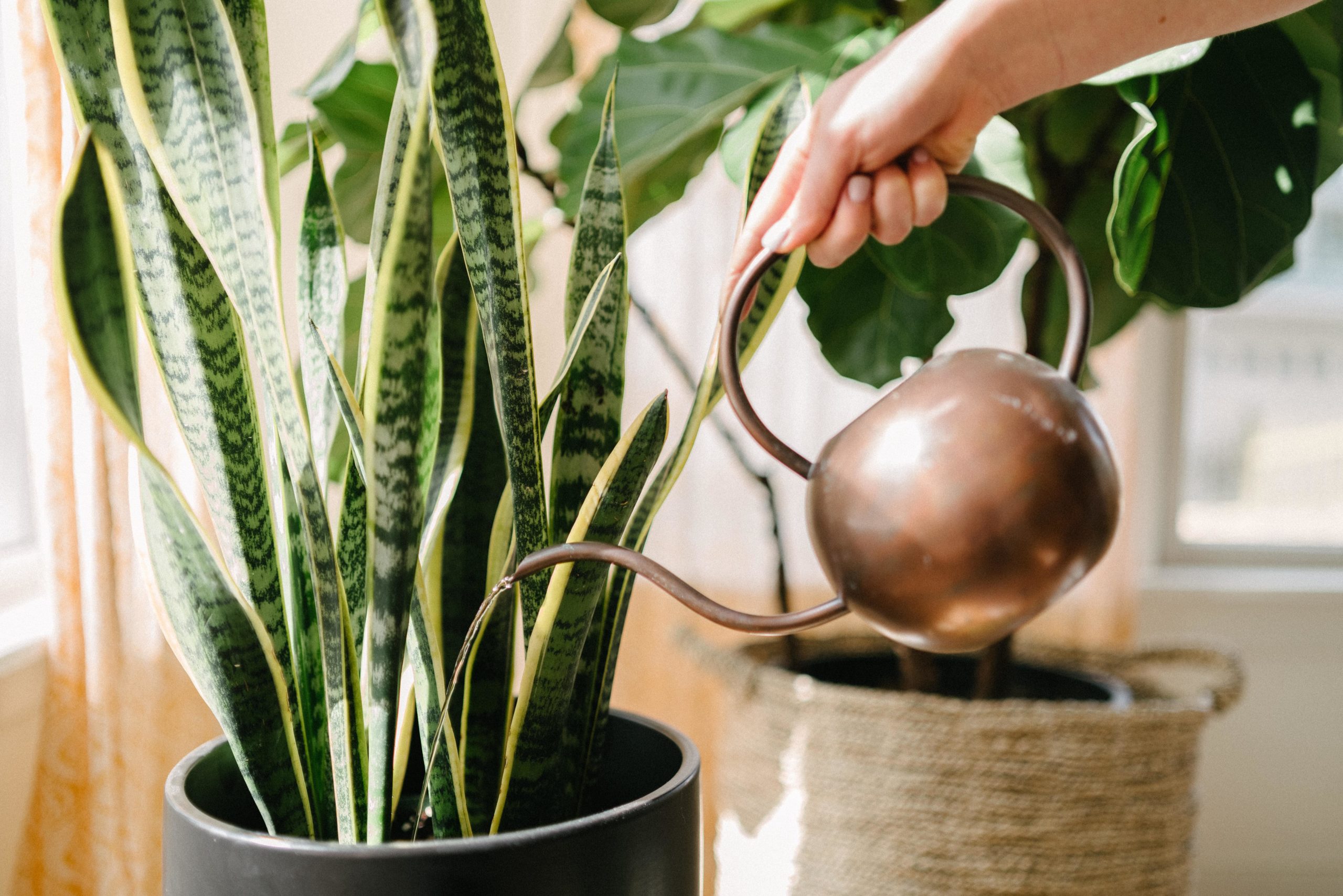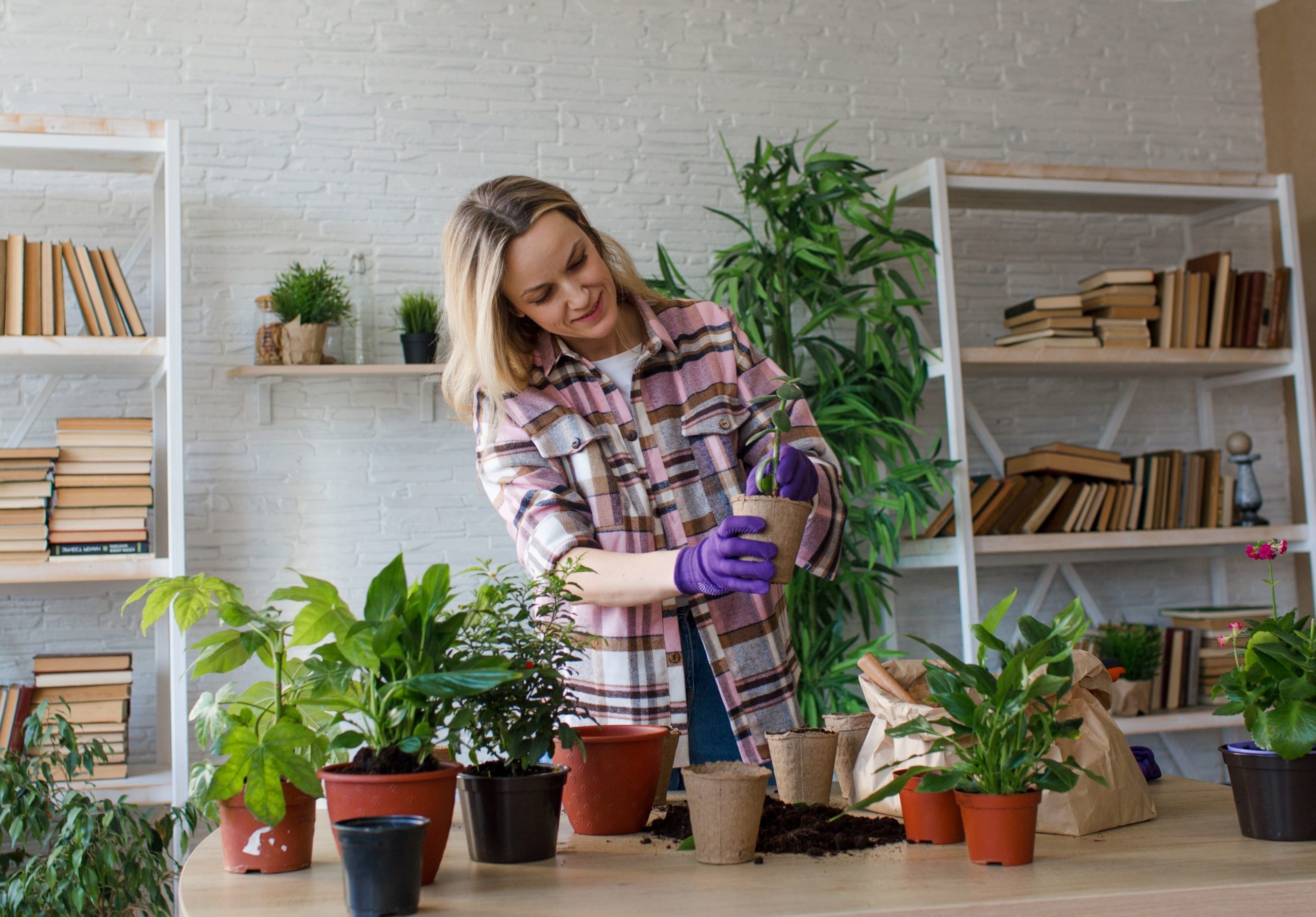Winter Houseplant Care: A Complete Guide to Indoor Winter Plants

Whether you’re an avid home gardener or you enjoy decorating your space with plants, winter houseplant care is necessary to keep things green year-round. In this blog, we’ll share winter houseplant care tips that will help you stay prepared for the cold months ahead.
Preparing House Plants For Winter
When preparing your house plants for winter, you’ll want to focus on three main factors: lighting, watering, and temperature.
Lighting
Similar to planting outside in your garden, when you’re learning about winter houseplant care, you need to know about indoor plants’ light requirements. Without the correct amount of sunlight, your plants may not grow to their full size or could die. Below, we’ve outlined a simple indoor plant light guide for you to use to find the best plants for every room.
Direct light
Direct light is the easiest (and cheapest) way to get your plants the natural sunlight they need to flourish. By placing your plants near or next to a bright window, they’ll receive about 12 hours of unfiltered sunlight each day.
The types of plants that thrive in direct sunlight include cacti, succulents, and herbs. A few examples include aloe vera, snake plants, and fiddle leaf figs. If you live somewhere that doesn’t have access to bright direct sunlight, you also have the option of buying indoor plant lights for winter.
Bright, indirect light
Bright, indirect light is exactly what it sounds like. This type of light is produced when the sun’s rays don’t directly hit your plant, instead, they will bounce off something first. This light can be shining through sheer curtains or reflecting off of something else.
The best way to determine if your plant is in bright, indirect light is by looking for an indistinct shadow. This technique is known as the shadow test. If there is a perfectly cast shadow, your plant is still in direct sunlight, but if the shadow’s edges are blurred it’s bright, indirect light.
The types of plants that like this light are usually coming from tropical rainforests because they grow tall enough to reach direct sunlight but still like the protection of partial shade at times. Some of these include the majesty palm, monstera, and English ivy.
Medium, indirect light
Medium, indirect light is light from the sun that’s filtered. This is different from bright, indirect light because you wouldn’t use curtains or shades to act as a barrier. Instead, it would be a spot where your plant is in the shade but still receives some sunlight throughout the day.
The types of plants that need this amount of light are usually found in natural habitats, shaded by tree canopies. Many tropical houseplants will thrive in medium, indirect light such as alocasia, dracaena, and ferns.
Low light
Low light refers to little to no sunlight. This light is usually seen in rooms with few windows or windows with heavier blinds. The plants that thrive in low light typically come from forest floors where they can tolerate full shade while still having a healthy plant life, making them great options for indoor winter plants.
Because of their adaptability to low-light environments, these plants will probably grow slower and won’t need as much watering or attention. Some low-light plants include pothos, peace lilies, and ZZ plants.

Watering
The next key factor of winter houseplant care is paying attention to your plants’ watering needs. In this section, we’ve outlined some basic guidelines that should help you determine how often to water indoor plants in winter so they stay happy and healthy during the cold months. First, we’ll cover the three common methods of watering indoor winter plants.
- Top to bottom– Push the leaves aside and add water for several seconds. Do this until the water runs out of the bottom of the container.
- Bottom– Fill a saucer or tray with water and place it under your plant. Once the plants have had enough, remove the excess water from the saucer or tray.
- Immersion– Place your plant in a standing sink or tub of water for up to an hour. This method will only need to be done once a month, and the excess water should be removed before returning the plant to its original spot.
Now that you understand the watering methods, it’s time to focus on the type of water you’ll be using. In order to ensure your plants stay unharmed by added chemicals, we recommend staying away from tap water if possible. Using distilled water won’t hurt your plants, but you may notice they don’t grow as fast or as tall as they’re supposed to. Because of this, you should try to stick with the two following types of water:
- Bottled water
- Rainwater
Next, you’ll want to know the different factors that affect each plant’s watering frequency. This can become complicated since each plant will have unique needs. Overall, you should focus on three elements.
- Environment– This will depend on where your plants are located. If it’s in a sunny location, it will most likely need to be watered more often than those in shaded places.
- Time of year– Your plants will need more water during their blooming and growing seasons. Make sure you adjust your watering schedule so that your plants aren’t being overwatered, resulting in root rot.
- Species– Specific plant species will frequently need water at differing intervals.
Finally, knowing the type of plant you have will determine its watering schedule. The simplest way to do this is by breaking your plants into three basic categories.
- Flowering– Plants that will bloom flowers. These plants prefer soil that is kept moist but not wet at all times.
- Foliage– Plants that only produce leaves. These plants should be watered directly into the soil, however, give them a rest period of time where the top inch of the soil becomes dry before watering again.
- Succulent/Cacti– Plants that have adapted to dry climates. You will not need to give these plants much water. You should water them once a week, but avoid soaking them.

Temperature
Finding the best temperature for houseplants isn’t as difficult as it seems because most indoor winter plants are from tropical or sub-tropical climates. This means the majority of your plants will grow best between temperatures of 60 to 75 degrees Fahrenheit.
There are also warning signs you can look for to determine whether the temperature is too cold or too warm. For example, if your room temperature is too cold, your plant may present the following signs:
- Curling leaves
- Brown leaves
- Stunted growth
- No flowers
- Black spots
Conversely, if your room temperature becomes too warm, your plant may begin to show signs such as:
- Wilted leaves
- Dried leaves
- Yellow leaves
- Bolting
- Sunburned leaves
- Leaves fall suddenly
Pest & Bug Prevention
Paying attention to the lighting, watering, and temperature requirements of your indoor plants will take you a long way in your winter houseplant care. However, one last thing you need to look out for is bugs and pests.
No one wants pests in their home, so make sure you’re being proactive about keeping them away from your indoor plants. If you find yourself with pest problems, consider trying some of the following tricks to keep the bugs away.
- Soapy water
- Rubbing alcohol
- Neem oil
- Soil covers
- Sticky traps

Keeping winter plants can be a great way to spruce up your home during the cold seasons. Check out our selection of houseplants, cacti, and succulents to begin creating your indoor garden today!
